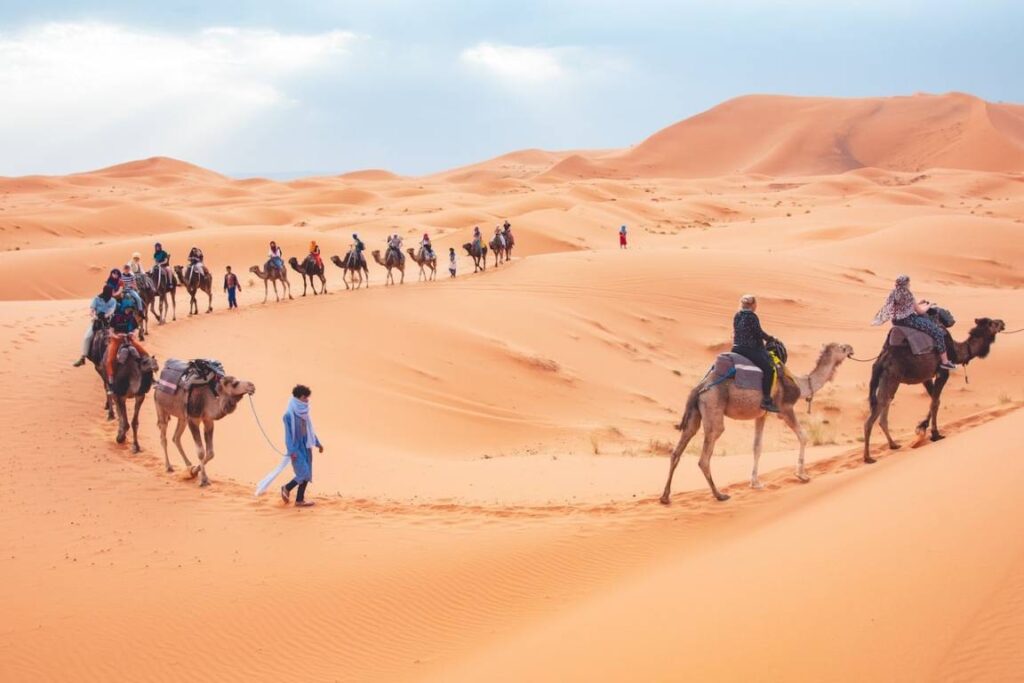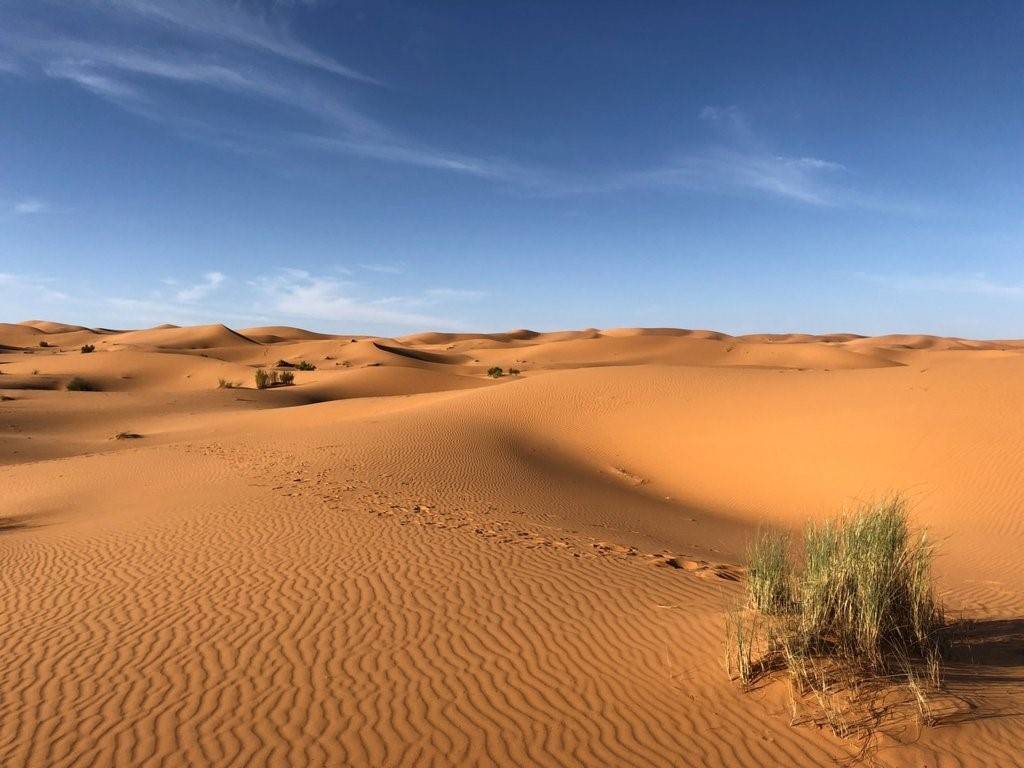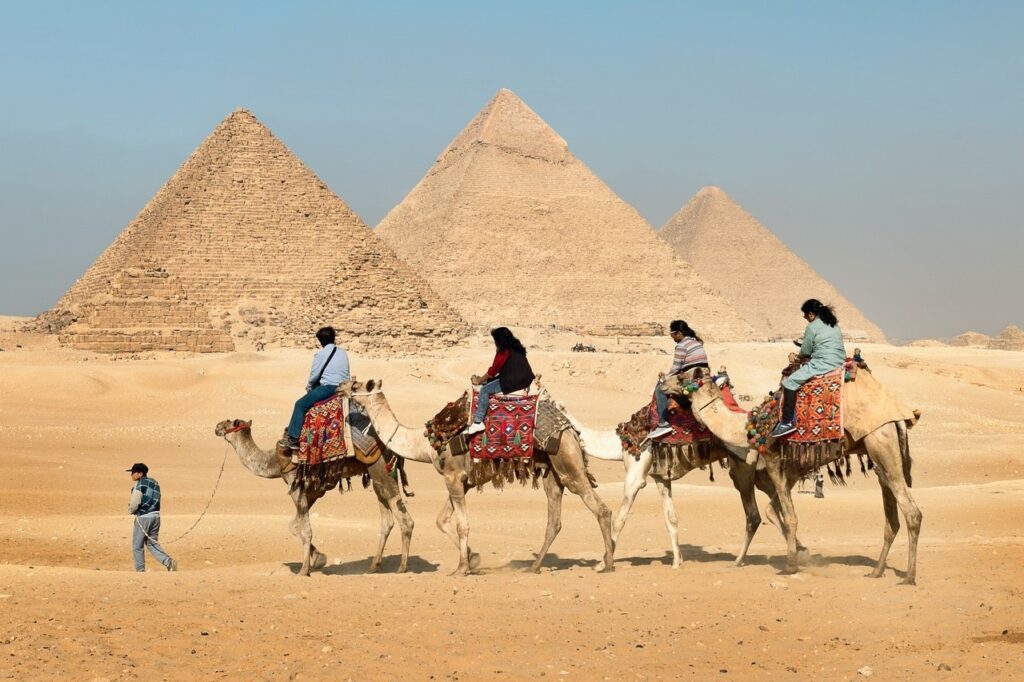The name Sahara comes from the Arabic word for “desert.” The Sahara is a hot, dry region that spans north-central Africa and extends into southern Europe. It’s home to a wide range of wildlife, including lions, elephants, leopards, and jackals. The Desert Sahara is the world’s largest desert and covers an area of approximately 9,400,000 square kilometers (3,600,000 sq. mi). The Sahara Desert is also one of the driest places on Earth, with only 1-2 mm of precipitation annually. This lack of rain results in extremely high temperatures, which can reach 50 degrees Celsius (122 degrees Fahrenheit). The Desert Sahara is the world’s largest desert and it stretches across much of North Africa. However, the Sahara has been inhabited for thousands of years by people who have adapted to its harsh conditions. The sand dunes that cover much of the desert are a result of the windblown sand which accumulates over many years.
The size of the Desert Sahara
The Desert Sahara is Earth’s largest desert, and the third-largest continent after Asia and Africa. At over 9,400,000 square kilometers (3,600,000 sq. mi), it covers an area about the size of the United States. The Desert Sahara is bordered in the west by the Atlantic Ocean, in the north by the Atlas Mountains and Mediterranean Sea, in the east by the Red Sea, and in the south by the Sahel. Despite its size, the Sahara remains one of the least understood deserts on Earth.
The size of the Desert Sahara
The Desert Sahara has a hot and dry climate, with temperatures reaching up to 50 degrees Celsius. The Sahara receives very little rainfall, and the air is often filled with dust and sand. The Sahara Desert has a hot and dry climate. The average high temperature is over 100 degrees Fahrenheit and the average low temperature is around 70 degrees Fahrenheit. The Sahara receives less than 2 inches of rain per year.
Original 7 wonders of the World
The Sahara is a vast desert located in Northern Africa that has a hot and dry climate. The Sahara is the largest desert on Earth, and it takes up about one-third of the African continent. The landscape of the Desert Sahara is mostly covered with sand dunes, or sometimes rock. Some places in the Sahara are better for plant life than others, and there are many different types of plants that can survive in the desert.

The people of the Desert Sahara
The Desert Sahara is one of the most diverse places on Earth in terms of the people who live there. The Tuareg people are the largest group, and they are scattered throughout the desert. Other groups include the Berbers, who live in the mountains, and the Arabs, who live in the coastal areas. Each group has its own culture and traditions, and they all depend on the desert for their survival.
The Desert Sahara is a large desert, it is home to many different people groups, including the Tuareg, Berbers, and Arabs. The Tuareg are nomadic people who live in tents and travel with their herds of camels and goats. The Berbers are agricultural people who live in villages made of mud brick. The Arabs are a Muslim people who live in desert towns. All of these people groups have their own unique culture and way of life.
Flora and Fauna
The Desert Sahara is home to a wide variety of plants and animals, including camels, lions, and sand rats. The most common plant in the Sahara is the acacia tree, which can be found in both the desert and savanna regions. The acacia tree is well-adapted to the hot and dry climate, and it has long thorns that help protect it from predators.
The animals of the Desert Sahara are also well-adapted to the desert environment. The Saharan jackal is a small predator that hunts small prey such as rodents and lizards. The Saharan gazelle is a graceful alligator that can run up to 50 miles per hour. And the sandgrouse is a bird that can survive for weeks without water by drinking dew from leaves.
The Desert Sahara is a natural desert, and it is not known when the first humans lived there. There are many theories about the origins of modern humans, but it is likely that they migrated out of Africa at least 200,000 years ago.

Economy of Desert Sahara
The Desert Sahara one of the most sparsely populated places on Earth. Despite its harsh conditions, the Sahara supports a number of thriving economies. Trade and transportation are key to the region’s economy, and the desert’s oases are major trade hubs. Tourism is also a growing industry in the Sahara, as adventurous travelers explore its unique landscape and culture.
The Sahara’s economy is based on livestock, fishing, and trade. The major exports are dates, fish, salt, and gold. Most of the people in the Sahara are nomads who raise livestock. They move from place to place in search of water and grazing land for their animals. Fishing is also an important part of the Desert Sahara’s economy. There are many rivers in the desert, and people catch fish with nets and traps.
5 states that encourage ecotourism in India
The Desert Sahara is a fascinating place with a rich history and culture. The people who live in the Sahara have developed their own unique culture. They have created a number of traditional crafts, such as weaving and metalworking.
It’s a fascinating place with a rich history and culture. The Desert Sahara is home to some of the world’s most interesting animals, including the sand cat, the Dorcas gazelle, and the addax. It’s also home to some of the world’s most interesting people, including the Tuareg people and the Berbers.

